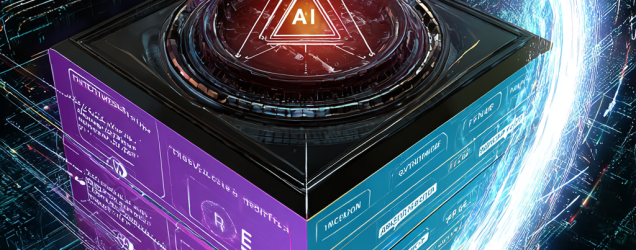
This article originally appeared on Medium, and has been republished here.
The software development industry stands at an inflection point. After decades of incremental improvements — from waterfall to agile, from on-premise to cloud, from monoliths to microservices — we’re witnessing a transformation that promises to fundamentally reshape how software is built. This transformation has a name: AI-Native Engineering.
Understanding AI-Native Engineering
AI-Native Engineering isn’t simply about developers using ChatGPT to debug code or GitHub Copilot to autocomplete functions. It represents a fundamental reimagining of the entire Software Development Lifecycle (SDLC), where artificial intelligence becomes an integrated collaborator at every stage — from requirements gathering to production deployment.
 Traditional vs. AI-Native: A Paradigm Shift
Traditional vs. AI-Native: A Paradigm Shift
In traditional software development, human engineers serve as the primary workforce. The process is linear and manual:
- Product Owners validate and refine requirements
- Architects review and update designs
- Developers write, review, and finalize code
- QA Engineers validate test results
- DevOps Engineers review deployment scripts and approve releases
Each handoff creates dependencies, delays, and potential for miscommunication. The result? Lower productivity, higher costs, and reduced speed of innovation.
AI-Native Engineering transforms this model. Instead of AI serving as an occasional assistant, it becomes a core participant in the engineering workflow:
- Requirements Analysis: AI conducts interviews, extracts requirements from meetings, generates user stories with acceptance criteria, and creates story points with dependencies
- Design: AI analyzes requirements, identifies constraints, generates architecture options, and creates comprehensive design documentation
- Build: AI develops code plans, generates implementation code, creates unit tests, produces PR descriptions, and automates quality checks
- QA: AI generates test scenarios and detailed test cases, creates automation test code, generates test data, analyzes logs, and identifies root causes
- Deployment: AI generates Infrastructure as Code, creates pipeline configurations, sets up monitoring, produces security scanning reports, and generates runbooks
The human role evolves from executor to orchestrator — reviewing, refining, and making strategic decisions while AI handles the mechanical and repetitive aspects of software development.
The Scale of the Opportunity
The numbers tell a compelling story about why organizations are racing to adopt AI-Native Engineering:
- 90%: Percentage of enterprise software engineers who will use AI code assistants by 2028 (up from less than 14% in early 2024). – Gartner
- 70%: Organizations that will include GenAI capabilities in their internal developer platforms by 2027. – Gartner
- 68%: Developers who expect employers will require AI tool proficiency in the near future. – JetBrains
These aren’t projections from starry-eyed futurists — they come from respected research firms like IDC, Gartner, and JetBrains.
The Hype vs. The Hope
Industry expectations continue to evolve, creating a complex landscape of promise and pragmatism.
The Hype Suggests:
- AI-Accelerated Development: 30–50% faster SDLC cycles with intelligent code generation and automated testing
- Intelligent Code Quality: Automated detection catching bugs and security issues early, eliminating costly late-stage fixes
- Developer Augmentation: Developers focusing on architecture and innovation instead of repetitive boilerplate code
- Continuous Optimization: Self-healing systems proactively resolving issues before users experience impact
- Legacy Modernization: AI tackling technical debt at scale, modernizing systems too risky to address manually
- Democratized Development: Citizen developers rapidly building applications, breaking the engineering resource bottleneck
- Measurable ROI: Smaller teams accomplishing more with AI augmentation, maximizing engineering capacity
The Hope (Reality) Demands:
While these promises are tantalizing, the reality is more nuanced. Organizations aren’t simply flipping a switch to activate AI-Native Engineering. The transformation requires fundamental changes to processes, governance, culture, and skills — and that’s where the challenges begin.
Six Critical Challenges Blocking Corporate Adoption
Despite the clear potential benefits, organizations face significant barriers to AI-Native Engineering adoption. Understanding these challenges is the first step toward overcoming them.
1. Security & Compliance Paralysis
The Challenge: Organizations struggle to balance innovation velocity with risk management. How do you enable developers to use AI coding tools while protecting sensitive intellectual property, customer data, and proprietary algorithms?
Why It Matters: Establishing data classification frameworks, negotiating zero-retention agreements with AI vendors, and creating comprehensive audit trails while maintaining developer productivity creates significant organizational friction. Many companies freeze in the face of these complexities, leading to delayed adoption or underground tool usage that bypasses security controls entirely.
The Impact: Legal, security, and compliance teams become bottlenecks, creating weeks or months of delay before developers can access AI tools. Meanwhile, competitors who solve these issues faster gain significant advantages.
2. Code Ownership & Accountability Crisis
The Challenge: When production issues arise from AI-assisted code, who’s responsible? The developer who accepted the AI’s suggestion? The AI tool vendor? The architect who approved the design? The QA engineer who tested it?
Why It Matters: Traditional software development has clear accountability chains. A developer writes code, a senior engineer reviews it, QA tests it, and DevOps deploys it. Everyone knows their role and responsibility. AI-generated code blurs these lines dramatically.
The Impact: Organizations lack frameworks for accountability, leading to a dangerous “blame the AI” culture. This erosion of engineering ownership principles can have devastating long-term consequences on code quality, team morale, and incident response effectiveness. When no one feels truly responsible for the code, quality suffers.
3. Quality Assurance at Unprecedented Scale
The Challenge: Traditional QA processes break under the weight of AI-generated code volume. When AI can generate thousands of lines of code in minutes, how do you ensure it meets quality standards?
Why It Matters: Best practices dictate 100% human review of code, maintaining test coverage standards above 80%, and preventing technical debt accumulation. But when AI increases code output velocity by 3–5x, these practices become unsustainable with existing team sizes.
The Impact: Organizations face an impossible choice: slow down AI adoption to maintain quality standards, or accelerate development at the risk of accumulating massive technical debt and security vulnerabilities. Neither option is acceptable, yet most companies lack the frameworks to navigate this dilemma effectively.
4. ROI Measurement & Tool Sprawl
The Challenge: Organizations adopt multiple AI coding tools — Claude Code, GitHub Copilot, AWS Q Developer, Cursor, JetBrains AI — without clear frameworks to measure their return on investment.
Why It Matters: How do you quantify the value of AI assistance? Traditional metrics like lines of code written or bugs fixed don’t capture the full picture. What about time saved in research? Reduction in cognitive load? Improved code consistency? Without measurement frameworks, organizations can’t determine which tools provide the best value, leading to budget bloat and tool sprawl.
The Impact: CFOs and engineering leaders can’t justify continued investment. Procurement teams don’t know which tools to standardize on. Developers become overwhelmed managing multiple AI assistants with different interfaces and capabilities. The result is inefficiency at scale and eventual budget cuts when ROI can’t be demonstrated.
5. The Skills Gap & Change Management Challenge
The Challenge: Engineering teams lack the prompt engineering and AI oversight capabilities required for effective AI-Native Engineering.
Why It Matters: Using AI coding tools effectively is a skill that must be learned. Developers need training on:
- Crafting effective prompts that generate high-quality code
- Reviewing AI-generated code for subtle bugs and security issues
- Understanding when to trust AI suggestions and when to override them
- Recognizing AI’s limitations and failure modes
Architects must learn new patterns for reviewing AI-generated architectures. Security teams require new skills for AI-specific vulnerability assessment. QA engineers need to understand how to test AI-assisted features effectively.
The Impact: Without proper training and change management, AI tools underdeliver on their promise. Developers use them ineffectively, generating low-quality code that creates more problems than it solves. Resistance builds, and the organization fails to capture the productivity gains that justified the investment.
6. Auditability & Transparency Deficits
The Challenge: Organizations cannot trace, explain, or reproduce AI-generated code decisions. This creates a “black box” problem that’s particularly acute in regulated industries.
Why It Matters: In healthcare, financial services, and other regulated sectors, you must be able to:
- Explain how and why specific code decisions were made
- Trace code back to requirements and design decisions
- Reproduce development processes for audits
- Attribute code to specific authors (human or AI)
- Document the level of AI assistance used in critical systems
Current AI coding tools provide limited visibility into their decision-making processes, making compliance with regulatory requirements extremely difficult.
The Impact: Regulated industries face significant compliance risks. When production issues occur, debugging becomes a nightmare because teams can’t understand the reasoning behind AI-generated code. Audit failures can result in fines, legal liability, and loss of customer trust.
The Path Forward
These six challenges aren’t insurmountable, but they require systematic approaches to solve. Organizations that successfully adopt AI-Native Engineering don’t simply deploy new tools — they:
- Build comprehensive governance frameworks that address security, quality, accountability, transparency, and cost optimization
- Invest in skills development to transform their workforce into effective AI collaborators
- Establish measurement systems that quantify AI’s impact on productivity, quality, and costs
- Create cultural norms that balance AI augmentation with human accountability
- Implement progressive adoption strategies that allow organizations to mature their capabilities over time
What’s Next?
Understanding what AI-Native Engineering is and recognizing the challenges organizations face is just the beginning. In our next article, we’ll explore the comprehensive governance framework that leading organizations use to address these challenges — a five-pillar model that provides security, ensures quality, maintains human oversight, enables transparency, and optimizes costs.
The transformation to AI-Native Engineering is inevitable. The question isn’t whether your organization will make this journey, but whether you’ll lead the transformation or scramble to catch up as competitors pull ahead.
AI-Native Engineering represents the most significant transformation in software development since the advent of cloud computing. Organizations that understand both its promise and its challenges — and that build systematic approaches to navigate the complexity — will define the future of software development.
—
Disclosure: This content was created through collaboration between human expertise and AI assistance. AI tools contributed to the research, writing, and editing process, while human oversight guided the final content.


